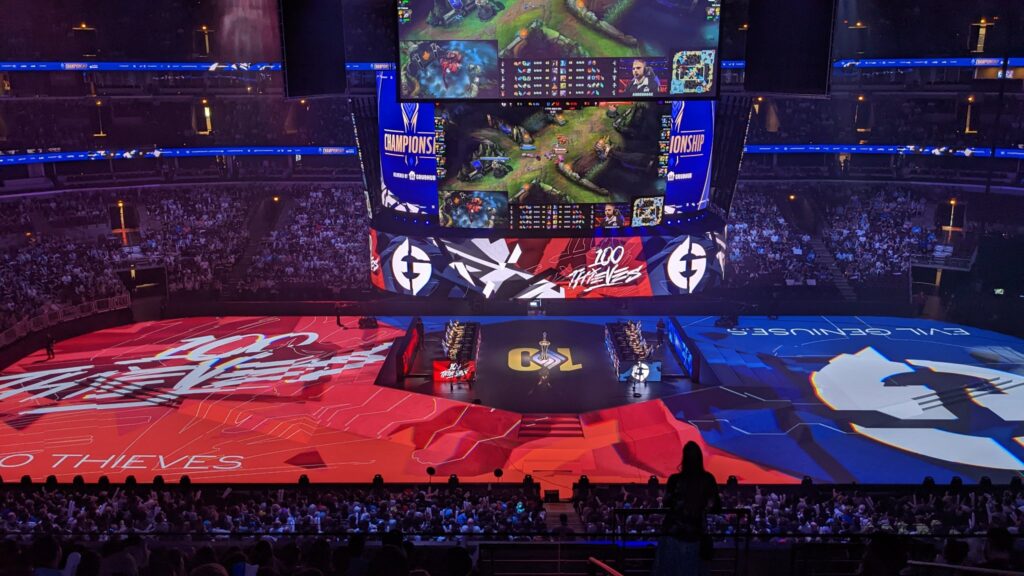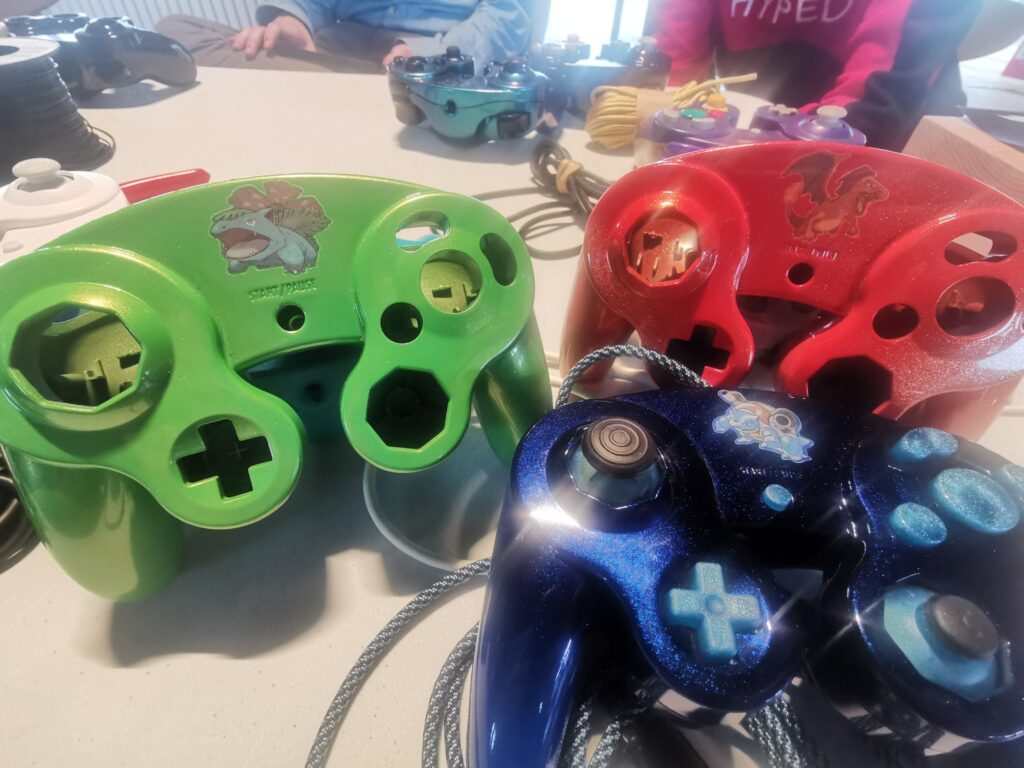The Meteoric Rise of High School Esports | What You Need to Know | Guest Mike Dahle | SDP195
More youth are participating in Esports – and it’s nothing like the trope stereotype of “gamer kids” isolated in their basements, chomping on chips and sipping sodas while gaming online with other kids in similar grunge contexts. In this episode, Esports expert Mike Dahle will help to accurately inform us about school Esports, including how it’s in-person and team-centric, ways Esports hones skills for learning – from analytical problem solving to time management, and how Esports helps students consider STEM career paths. In fact, universities are providing scholarships for Esports athletes!

DIRECT LINK to MP3 of this Episode: https://tinyurl.com/SDP195-AUDIO
ABOUT MIKE DAHLE. Mike Dahle is a Business Teacher at Elkhorn Area HS and President of the Wisconsin HS Esports Association, WIHSEA.org. He was a second-year teacher when he learned how far PC gaming had come since his younger gaming days when a student gave a presentation on the League of Legends World Championship. Ever since that presentation, his interest in esports has grown exponentially. He started one of the first state associations that has since grown to 125+ schools around the state, serves as a Board Member for the Milwaukee Esports Alliance, serves as a Board Member for the Interstate Scholastic Esports Alliance, and is constantly trying to push esports to the next level in the state of Wisconsin.
WHAT DOES BOARD OF EDUCATION POLICY LOOK LIKE FOR ESPORTS. There isn’t a template for BOE policy for Esports. It’s often treated similar to other school clubs. Surprisingly, some districts have bypassed Esports due to the cartoonish guns in some of the games. It’s worth noting that high school trap shooting team numbers are at record highs in America.
ARE ESPORTS INDIVIDUAL OR TEAM? Most games are team-based, and individual matches add into a team score. This happens in the game SUPER SMASH BROTHERS, for example. Think of it like batting order in baseball. Players are seeded so one school’s #5 player would compete against the #5 player from a different school. Esports can be played by teams within a state, but also between states. It depends upon how the league is structured.
WHAT ARE THE MOST POPULAR ESPORTS? The top five popular titles are: Super Smash Bros, Rocket League, Fortnite, Valorant, and League of Legends.

ARE ESPORTS ACCESSIBLE FOR STUDENTS WITH DISABILITIES? Yes! There is much flexibility in accommodating Esport players as long as the accommodation doesn’t afford them an unfair competition edge. In Milwaukee, for example, a company designs adaptive controllers. A high-ranked quadriplegic player uses a mouth-held device to game. Esports also require minimal travel. Students typically only leave their district if they are participating in a state-level competition.

3D PRINTING AND ESPORTS. The 3D printing community collaborates through sites such as “Thingiverse” to create different or adapted controllers, and Microsoft offers several adaptive controllers.
BENEFITS OF ESPORTS FOR STUDENTS. Gamers gain useful skills from participating in esports that help them on a broader learning journey. Analytical problem solving, time management, collaboration, and teamwork are key. Video games can also help to improve visual perception, enhance memory, and lead to better focus and attention. Some students who participate in Esports had previously not participated in other extracurricular activities.
DO SCHOOLS GIVE CREDIT FOR ESPORTS. In most instances, students do not receive “credit” for participating in Esports. There is no curriculum approved by DPI to this point, although there is discussion to develop a curriculum. There is an inaugural INTRO to ESPORTS class at UW (Wis)-Parkside this year. Some Wisconsin schools, including: Random Lake, Racine, and Montello, award a patch for varsity.
ARE ESPORTS PART OF TRADITIONAL STATE ATHLETIC ORGANIZATIONS? This varies by state. In Wisconsin, the WIAA and WIHSEA are separate entities and, at present, do not collaborate. Playfly (an Esports business) partners with high school state associations in Washington and Arizona to provide students with the infrastructure to compete and learn.
HOW DO SCHOOLS FUND ESPORTS? Esports has a very small funding footprint. Coaches are either unpaid volunteers or receive stipends ranging from $400 to $5,000. Compensation for coaches and persons managing leagues is inconsistent across schools. Esports is generally under-funded when compared to compensation for coaches or people who oversee school clubs. Twitch channel and affiliate program generates $2.50 per subscriber. SPONSORS at the local level (Wisconsin) include: Spectrum Industries from Eau Claire, Bug Tussel Wireless, and Allstate insurance agents. Jolly Good Soda sponsors Random Lake. There are no state-level sponsors for Esports in Wisconsin. It is difficult for Esports groups to obtain a bank account or PayPal. Some schools host fundraiser invitationals. The “Extra Life” www.extra-life.org gaming marathon is a 24-hour charity event that raises money for children’s hospitals, including Children’s Hospital of Wisconsin. It was held on November 5, 2022.
POST HIGH SCHOOL OPPORTUNITIES AND CAREERS. There is a significant and growing collegiate scene for Esports with various organizers, including The National Association of Collegiate Esports (NACE). Students might receive scholarships. Post-secondary institutions have dedicated facilities and faculty, and the universities that recognize Esports as a varsity level program enable players to compete for a national championship. In less formal settings, Esports might be thought of similar to intramural sports, or be student-run club level teams, like Rec Well or Student Life. Collegiate teams can compete in other leagues. Universities feature Esports as a recruitment tool. ESports might have a similar influence for K-12 open enrollment. Beyond gaming, players maximize Esports to develop their own business acumen – complete with social media marketing, analytics, coaching, blogs, analyzing competition film, networking, and IT infrastructure. Being an Esports player or working in an Esports league as an analyst, IT, etc., has parallels to an internship in marketing and IT.
WHAT SHOULD PARENTS AND SCHOOL LEADERS KNOW ABOUT ESPORTS? Esports is broadly popular, but specifically offers opportunities for a school’s under-represented students. For some students, Esports is the only extracurricular activity they participated in during their school career. And there’s evidence to suggest that playing Esports improved student’s grades and attendance. Esports aligns with the CDC’s themes for School Connectedness. At Arrowhead Union High School (Wisconsin), 60-70 students stay after school on Fridays to play Esports. Parents drop off TVs and students even play under tables. Esport players are voluntarily participating in-person with their peers. They are not sitting at home in their basement. Esports participants learn play-by-play announcing, media coaching, post-game interviewing, and public speaking skills. Esports has helped students obtain scholarships. One student received a 60% scholarship. He was an athlete on the autism spectrum. “If you leverage this program correctly, you can do a ton with it.” The National Association of Esports Coaches and Directors works to serve, legitimize, and advance Esports at all levels https://www.naecad.org/about-naecad. Mankato University (MN) presented at the NAECAD conference. It’s ranked as the top school for broadcasting. An Esport player’s next step could be to form a broadcasting club, or to pursue a career in broadcasting – perhaps by attending Mankato University.
MORE THINGS SCHOOLS SHOULD CONSIDER ABOUT ESPORTS. Some games include cartoon guns, a disqualifying feature per some school districts. Student data privacy is a concern. What is on the networks? Is there an in-game chat feature, and if so, how do we turn it off? The Esports launching software can present challenges. The games themselves are efficient, but the system to access the game can be buggy. Schools should create separate Esports logins on computers and also toggle settings so Esports can’t be accessed until after 2PM. Esports is inclusive, and also an equity-oriented activity. You don’t need expensive gear and to pay a sports fee to participate. You also don’t have to rent expensive facilities. Esports increase opportunities for students both as players as well as other niche roles, such as announcing, communications, web design, and IT. There isn’t a Name-Image-Likeness (NIL) prohibition clause in Esports. Although it is rare, a high school Esports player could enter into paid sponsorship deals – and by doing so, wouldn’t have to forfeit their eligibility to play Esports. Esports can be included in the school district’s DPI 5-year Pupil Nondiscrimination report as increasing extracurricular opportunities for students. It is particularly inclusive for students with disabilities or students without the financial means to participate in activities that have higher barriers to entry for personal equipment costs, facility rentals, and participation fees. Esports teams can consist of a mixed-gender roster. Consider formal club recognition for Esports to facilitate a funding account in your school district’s fiscal chart of accounts.
This is episode 195 of The Safety Doc Podcast published on 11-22-2022. This podcast and blog post represent the opinions of David P. Perrodin and his guests to the show. The content here is for informational purposes only. Please consult with your safety professional regarding the unique needs of yourself or your organization.
FOLLOW
- Watch this episode on “The Safety Doc” YouTube channel https://tinyurl.com/SDP195-VIDEO
- Listen to this episode on PodBean MP3 https://tinyurl.com/SDP195-AUDIO
- Apple Podcasts http://tinyurl.com/SafetyDocApplePodcasts
- SAFETY DOC WEBSITE & BLOG safetyphd.com
- Follow David & The Safety Doc Podcast on Twitter @SafetyPhD
- Email Dr. Perrodin thesafetydoc@gmail.com
Purchase Dr. Perrodin’s books
School of Errors – Rethinking School Safety in America
The Velocity of Information – Human Thinking During Chaotic Times
